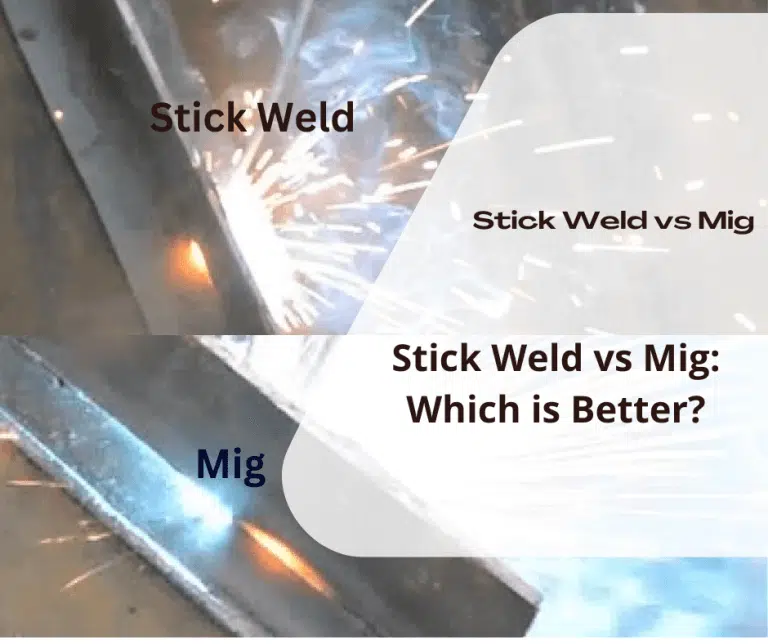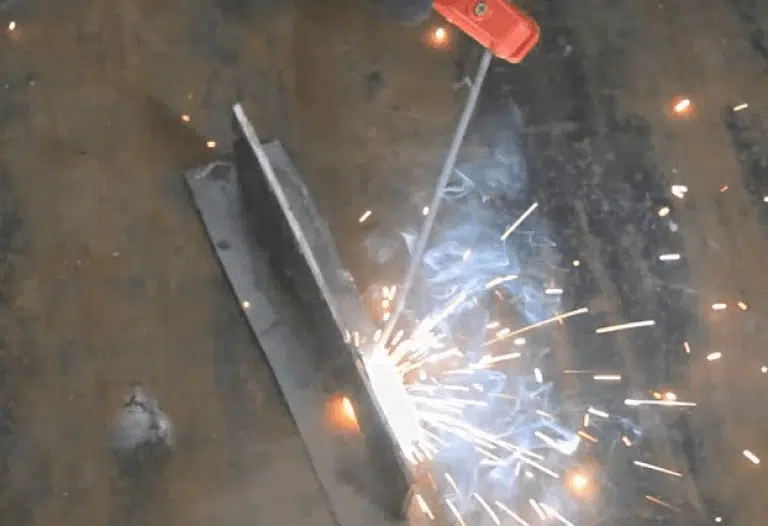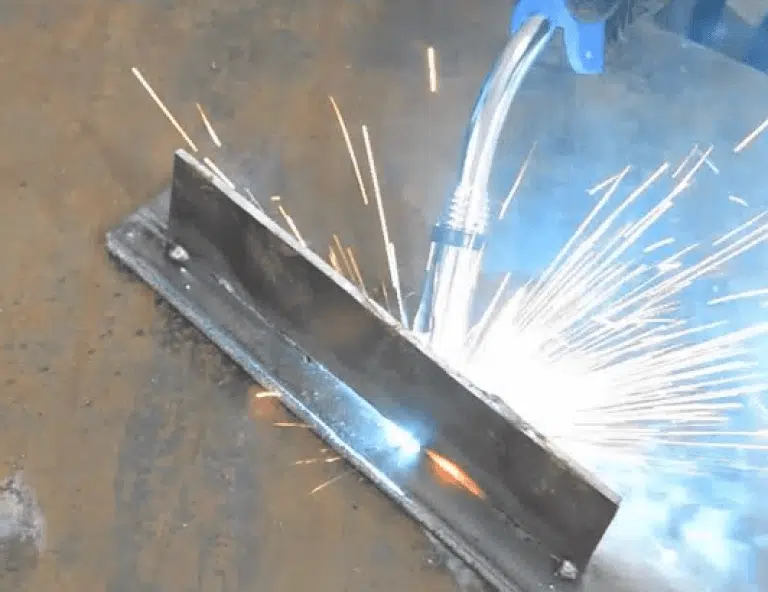Choosing the Best Mig Welder
Affiliate Disclaimer: migweldercart.com provides industry expertise and research to its readers. You help us by using the links to our carefully picked items, which may earn us a little commission.

Everyone understands the significance of using appropriate equipment. The method you use when welding is just as crucial as your equipment. It’s like attempting to cut a 2×4 with a screwdriver if you use the improper welding technique. Could you have a good go at it?
There is a lot to think about before diving headfirst into welding if you’re a beginner. Different metals will need additional procedures or materials, and some ways are significantly better suitable to particular purposes than others. So what criteria should be used to choose the best approach to take? That’s why this article is so helpful.
Stick and MIG welding are now the two most often used welding methods. However, there are advantages and disadvantages to every procedure. Using the correct method may save a lot of hassle and wasted time.
Learning the ins and outs of each method will help you choose which one will serve your needs best in a specific scenario. For your convenience, let’s examine the differences between these three options.
If you’ve been welding for any time, you’ve probably learned how to use an arc welder. It requires using a charged metal stick to produce a very hot arc. Then, metal joints are welded using an electric current that runs through a space between the welding stick and the metal.
Stick welding has been the standard and preferred technique of welding.

Welding in this fashion is the method of choice for most electricians and small-scale welders who work out of their homes. Considered a reliable technique, it can successfully weld almost any metal or metal alloy and any joint.
Stick welding may be done in tight quarters or the open air. Stick welding, the cheapest welding technique, can create strong welds on rusted or unclean metals.
Stick welding, too, has its drawbacks. It produces an arc so intense that it may raise the temperature of the metal to extreme levels. In practice, stick welding is impractical for metal thinner than 18 gauges. Stick welding need frequent rod changes for the same reason. In addition, large amounts of spatter are produced, necessitating post-weld cleanup.
Stick welding is also more challenging to understand and operate for a beginner. Striking and maintaining an arc is a particularly tough skill, but it makes everything else much simpler once mastered.
Stick welders may run on either alternating or direct current (AC) or both AC and DC (DC). Costs are reduced using an AC input welder. Thicker metals, those measuring 1/16 inch or more in width, need these welders.
DIYers, handypersons, and farmers may all benefit from using a stick welder for everyday household repairs like fence or barbecue joints.
Automatically and consistently, MIG welders feed in a wire welding electrode produced on a spool. An arc is created when electricity moves between the base metal and the wire. The junction is formed when the wire and the metal’s base melt from the impact of the electric current. There is virtually minimal maintenance required for the weld produced by this method.
MIG welding is less time-consuming and more manageable in terms of cleanup. The tool is versatile enough to be used on metal sheets of varying thicknesses. Welding with MIG is easy to learn and master; you only need a week or two of practice.
Shielding gas selection and welding machine parameter setup are two of the most challenging components of MIG welding. Once they are taken care of, the method is sometimes referred to as the “hot glue gun of welding” since it is essentially a “point and shoot.”
Strong welds may be fabricated using this method, and they don’t even need much post-weld cleanup, such as sanding or cleaning. Applying a shielding gas makes welding easier by allowing the welder to create an arc at a consistent pace. MIG welders can weld materials as thin as 26 gauge, making them ideal for intricate, accurate welding projects.

There are certain drawbacks to MIG welding. To begin with, welding generates a lot of fumes, making it challenging to utilize the equipment outside. However, the MIG welder is versatile enough to cope with any metal. Still, various materials need for different spool wires and gases.
The user of a MIG machine must also be familiar with the many settings that may be adjusted according to the task at hand. One solution is to use a device with an automatic setting mechanism, which may save a lot of time.
To acquire the finest results from MIG welding, it is also vital to do so on a clean metal surface. To prepare a surface for welding, a welder will first scrape away any loose paint, rust, or other debris.
While MIG and Stick welding can produce excellent welds, they have unique setups, advantages, disadvantages, and uses. Nevertheless, most people find MIG welding the most straightforward torch technique to master.
And although Stick welding may also be a rapid study, it’s more challenging to master. Stick welding, the original arc welding, has been in use since the 1930s and is still the preferred method for many seasoned professionals.
High-quality welds may be made using either MIG or Stick welding systems; however, the kind of metal dramatically affects the performance of the welding equipment. MIG welding is preferable for joining thinner metals because it produces a cleaner weld and is more robust. The Stick’s efficiency is maximized on metals thicker than 3/8 inch.
The MIG gun’s user-friendliness also allows for high output with little maintenance. Because of this, it finds widespread use in the fabrication industry. In addition, it is the tool of choice for automated welding processes.
Stick welding is slower than MIG welding because of the lengthier warm-up time required when turning on the gun and the more significant downtime needed while switching electrodes.
Regarding cleaning and cleanup, MIG and Stick welders offer contrasting advantages and disadvantages, with one needing more effort before the weld and the other after. Because a Stick welder can create a strong connection on a dirty or rusty surface, cleaning the workpiece that is needed with a MIG setup is unnecessary.
Stick welding, on the other hand, involves using electrodes coated with flux, leading to spatter that must be chipped away once the weld has cooled. However, with MIG, the shielding gas does double duty by protecting the weld as it cools and clearing the area of any spatter. In the end, there will be far less mess to clean up.
Welding outdoors, in windy situations, or other places where the MIG setup’s shielding gas would be affected is much easier using a Stick welder.
It’s not like the MIG welder, which is limited in where it may be used because of the length of its cord; instead, it can be rolled to the spot. The ability to adjust the nozzle angle on a Stick welder is helpful for welding in confined spaces or at unusual angles.
Stick welding is one of the least costly welding methods. In contrast, MIG welding is more expensive because of the many consumables it requires (and the downtime needed to change them.)
However, the ability to do long welds using a MIG gun and a continually fed wire may help to offset the price. A stick welder requires no consumables beyond the electrode. However, the lifespan of a weld is limited by the electrode’s lifespan.
There is no optimal solution available. Due to their peculiarities, stick welding and MIG welding have their applications.
Due to its low cost and low barrier to entry, stick welding is ideal for novice welders. In addition, stick welding is a viable choice if you aren’t concerned with a pristine appearance and are ready to spend time cleaning and sanding the bead afterward.
Compared to Stick welding, MIG welding is far quicker, more efficient, and less polluting. But MIG machines are often more costly, harder to set up and understand, and less common. For the more experienced and frequent hobby welder, or the professional welder searching for freelance work, a MIG machine is the preferable alternative.

M Hasan
I’m a professional welder and a writer at heart, so I wanted to share the welding expertise I’ve gathered over the years. In addition, I hope our posts motivate others to start welding. I have well-researched. I promise you’ll find honest advice on choosing the best MIG welder here- www.migweldercart.com
Check Out My Reviews On The 10 Best Mig Welder.
Disclaimer:
Our website, www.migweldercart.com, participates in the Amazon Services LLC Associates Program. As an Amazon Associate, we collect commissions on qualifying purchases, but our readers have no difference in price. Our website’s products, brands, trademarks, and pictures belong to their respective owners.